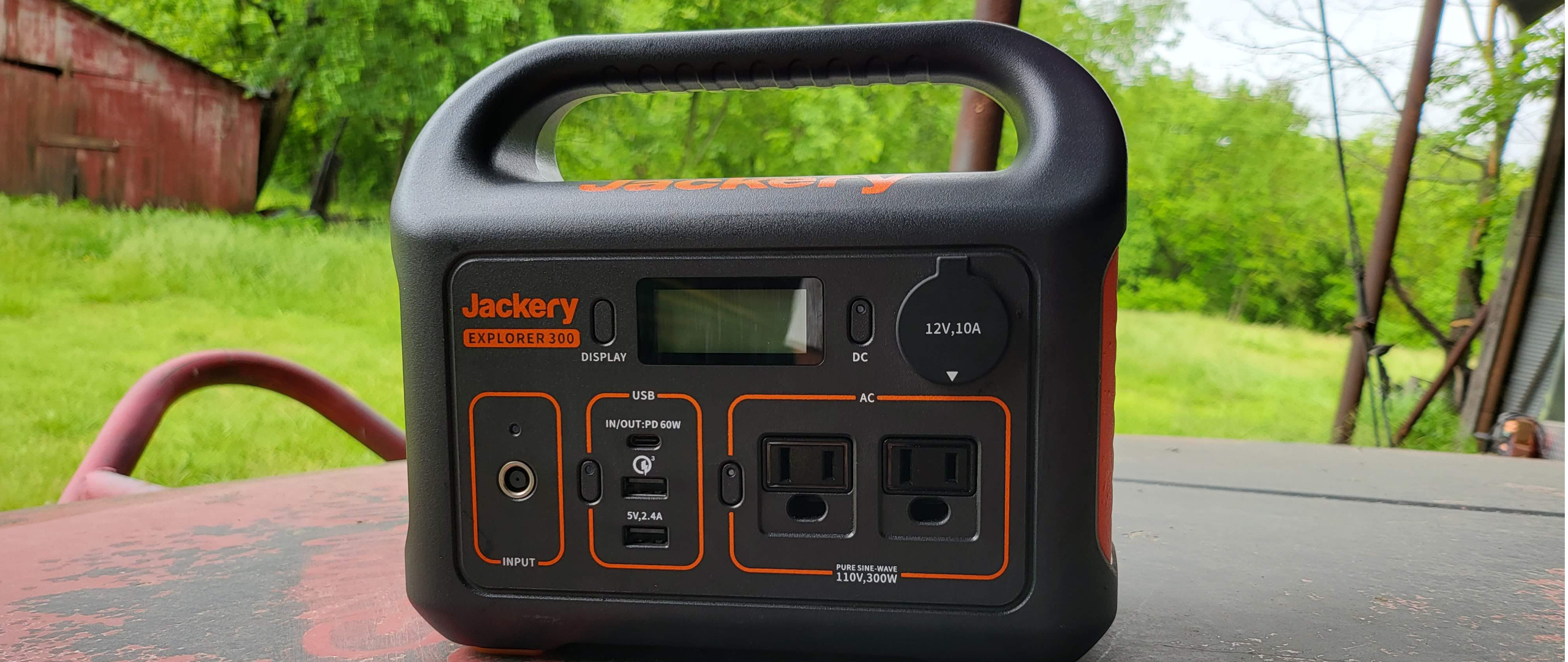Android Central Verdict
Thanks to its size and output, the Jackery Explorer 300 is a handy power station perfect for outdoor activities or keeping essentials powered up in an electrical outage. However, when left in the dark, the Explorer 300 won't be providing light itself as it lacks a lamp.
Pros
- +
Easy to carry around
- +
Capable of fast recharge times
- +
Good variety of outputs
- +
Multiple ways to charge it up
Cons
- -
External charging inverter
- -
Display won't show the time remaining
- -
No LED light
Why you can trust Android Central
These days, most of us have some form of dependency on electricity. Setting aside powering our homes, we use electricity to enjoy many of life's moments. But it can add stress when that convenience isn't available, whether because of a power outage or you're somewhere without access to electricity. Thankfully, with the help of science and technology, portable power is becoming more widely available.
This is where the Jackery Explorer 300 comes in. I have been putting it through some tests and am ready to let you know if you should invest your hard-earned money in this power station.
Jackery Explorer 300: Price and availability
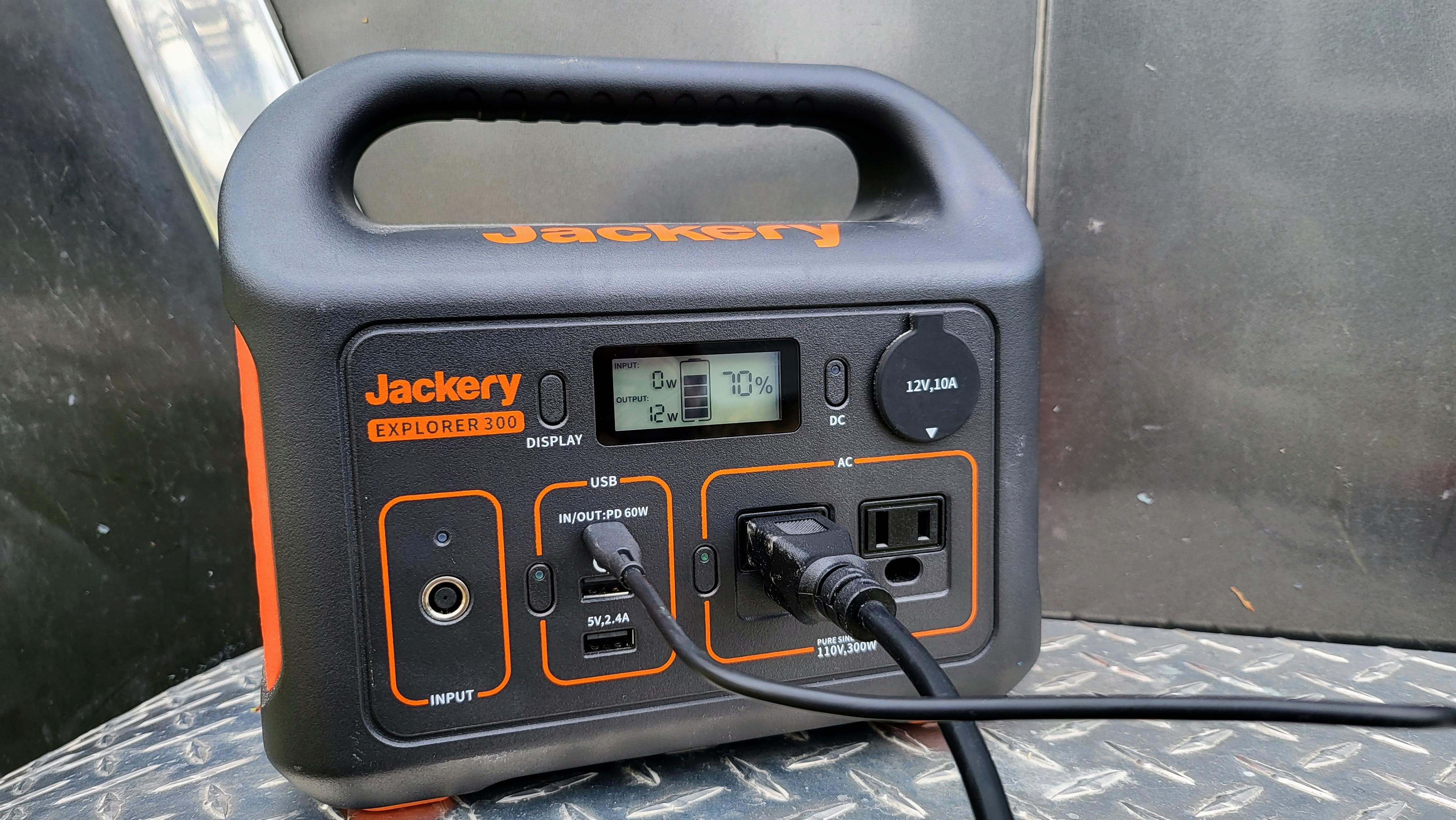
Jackery's 2021 Explorer 300 portable power station model launched with a $300 price tag and is still selling for the same price. There are sales and coupons from time to time, but typically the unit is found for $300 at retailers like Amazon, as well as the Jackery website.
Jackery Explorer 300: What's good
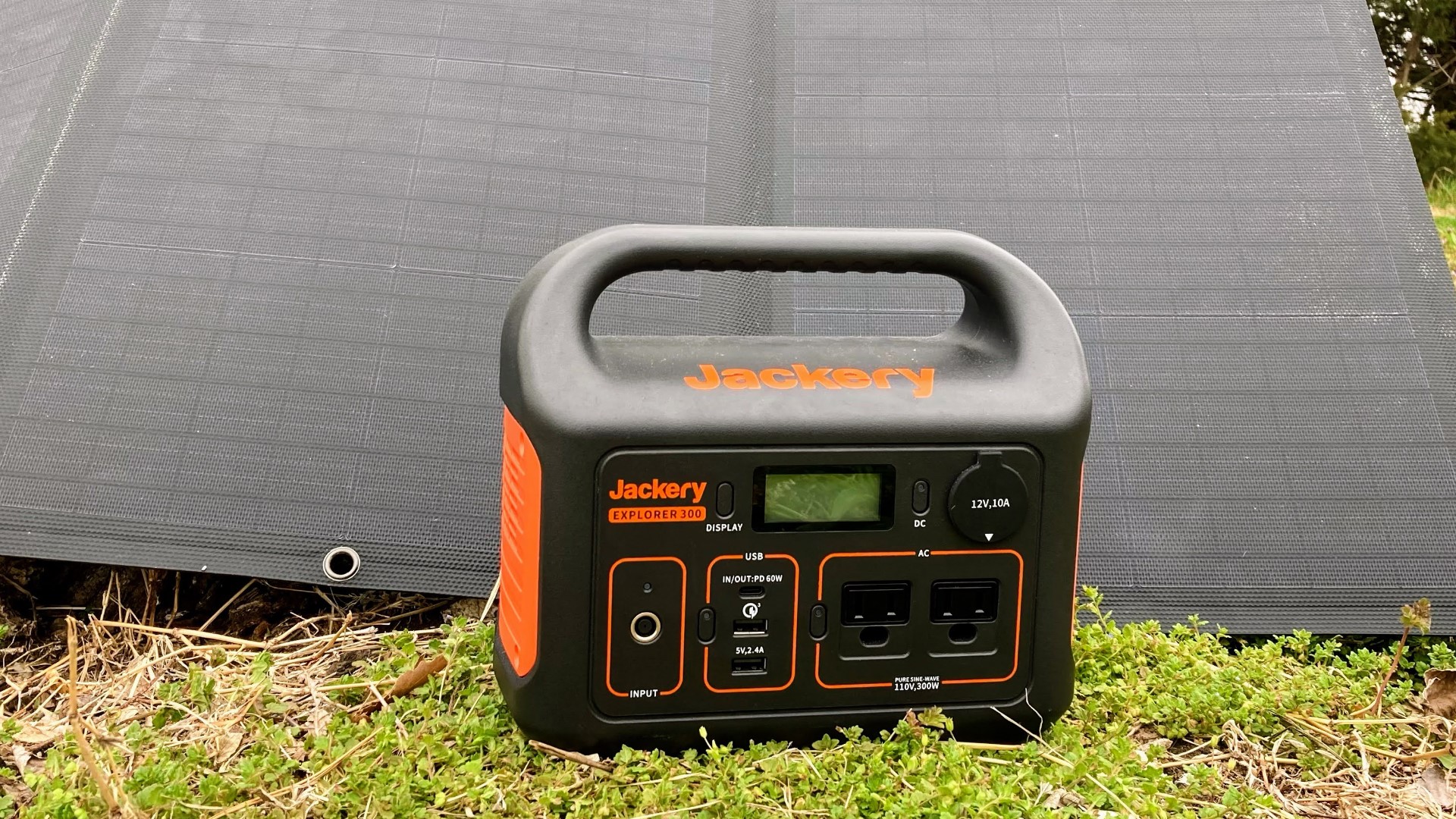
The Jackery Explorer 300 is a 7.1-pound portable power station and can also be referred to as a solar generator. No, it doesn't generate solar rays. The solar generator name is because you can recharge the battery pack using solar via a separate solar panel. Back to the Explorer 300 itself, it is solid and well constructed with a built-in handle at the top for carrying the unit around.
As for looks, the Explorer 300 is wrapped in plastic sporting the iconic Jackery black and orange colors. There are four rubber feet on the bottom to keep the power station from sliding around. On the sides are openings to help the internal fans to keep the unit cool. But the front is where all the real action is.
| Header Cell - Column 0 | Jackery Explorer 300 |
|---|---|
| Dimensions | 9.1 x 5.2 x 7.8 in. |
| Weight | 7.1 lbs. |
| Display | 1.87-inch LCD |
| Colors | Black and orange |
| Battery | 293Wh (14.4V, 20.4Ah), Li-ion NMC, 500 cycles to 80%+ capacity |
| AC Output | 110VAC, 60Hz, 300W (500W Surge) |
| Car Charger Output | 12V, 10A |
| USB-A Output | 5V, 2.4A, |
| Quick Charge 3.0 Output USB-A | 5-6.5V, 3A / 6.5-9V, 2A / 9-12V, 1.5A |
| USB-C PD Output | 5V, 9V, 15V, 20V, 3A |
| DC Input | 12V-30V (90W Max) |
| Solar Charger Input | 12.6-22V |
| Car Charger Input | 13.6V |
| USB-C PD Input | 60W |
| Maximum Charging Input | 130W |
| Connectivity | 🚫 |
| Protection | BMS, Over Voltage Protection, Short Circuit Protection |
| Operating Temperature | 14-104°F (-10-40°C) |
| Recharging Temperature | 32-95°F (0-35°C) |
At the top of the front side, you'll find the small 1.87-inch LCD panel that gives information on the input and output rates and the battery percentage. To the left of the display is a button to turn on the backlight for the screen and on the right is a button to turn on the 12V DC port.
Below that port, you'll find two 110V AC outlets with their own button to turn them on. To the left are the USB ports consisting of a bidirectional USB-C 60W PD port, a Qualcomm QuickCharge 3 USB-A port, and a standard USB-A port below it. Finally, the input barrel port for charging via a wall outlet with the included external DC inverter is on the far left.
The Jackery Explorer 300 is lightweight and compact yet still packs a punch.
It's from these ports that the Jackery Explorer can pump out up to 500W in a power surge and a sustained 300W pure sine wave electricity coming from the inverter and a 293Wh battery cell. While this kind of power output isn't going to run your house, an air conditioner, or a toaster, it will be excellent for running other small appliances and electronics.
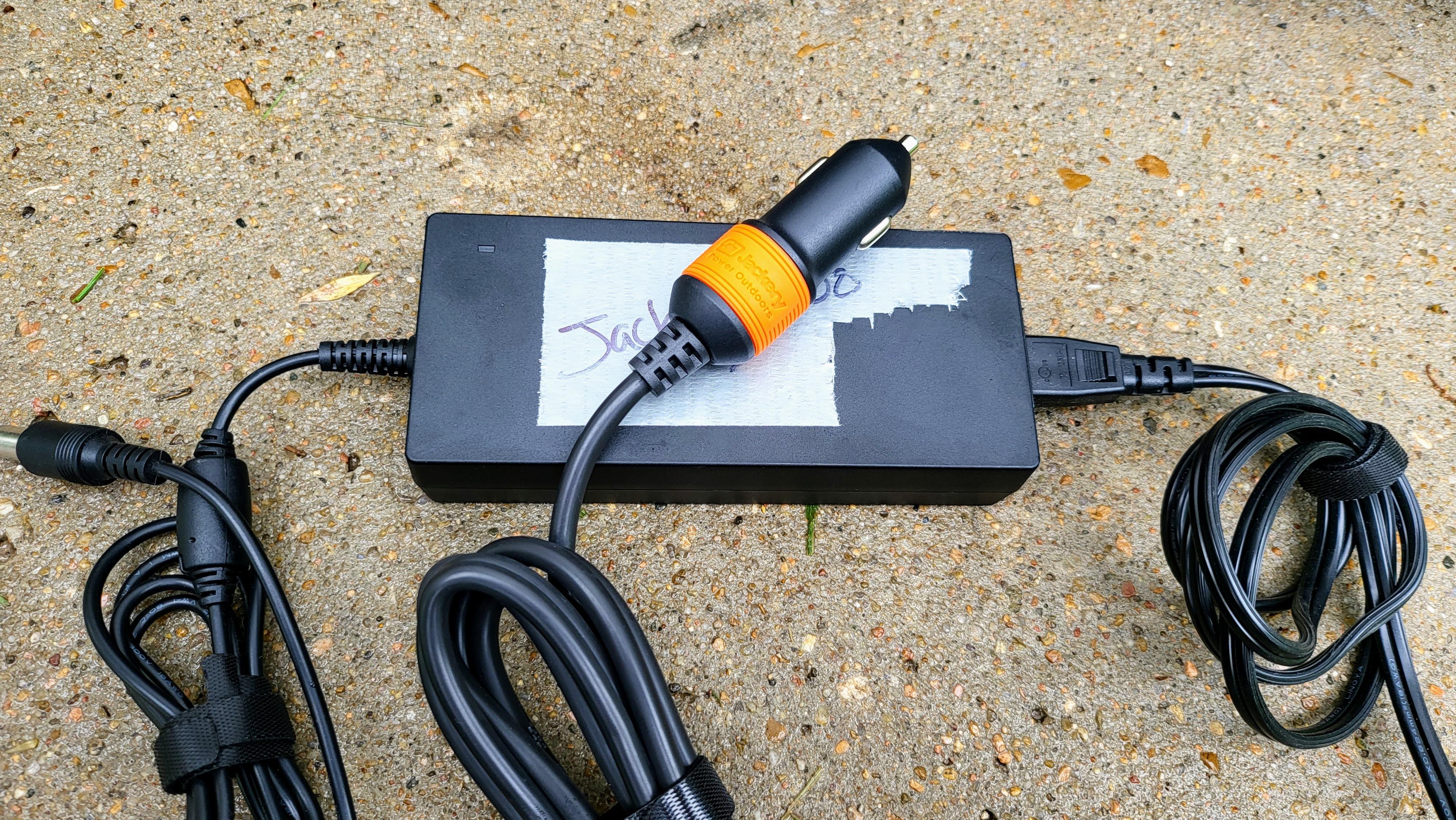
I do quite a bit of camping during the summertime and generally spend a good amount of time in areas without power — voluntarily and otherwise (rural problems). With that said, depending on my needs and what I'm doing, I always bring some form of power with me. Whether that is one of the best portable power banks or something more substantial like the EcoFlow Delta Pro, I like to be ready for anything.
The Jackery Explorer 300 is great for times when I need more than a USB port from a power bank, but not so much that I require the output capabilities of the Delta Pro. Not only does the Explorer 300 have enough wattage to handle charging any of my mobile devices, a speaker, and a fan, but thanks to the charging input option, it is fast and easy to recharge.
While it isn't going to power any major tools or appliances, the Jackery Explorer 300 is the perfect portable power companion in many applications.
When it comes to charging the Explorer 300, there are multiple ways to do it. The included wall charger plugs into the 8mm barrel port or the DC 12V car plug that will use the same port. You could charge it using the USB-C port at up to 60W using one of the best USB-C chargers. As mentioned earlier, it can also charge using a solar panel that utilizes the 8mm port. The wall outlet and USB-C are the fastest options, but the best part is that the unit can recharge even faster by combining these methods.
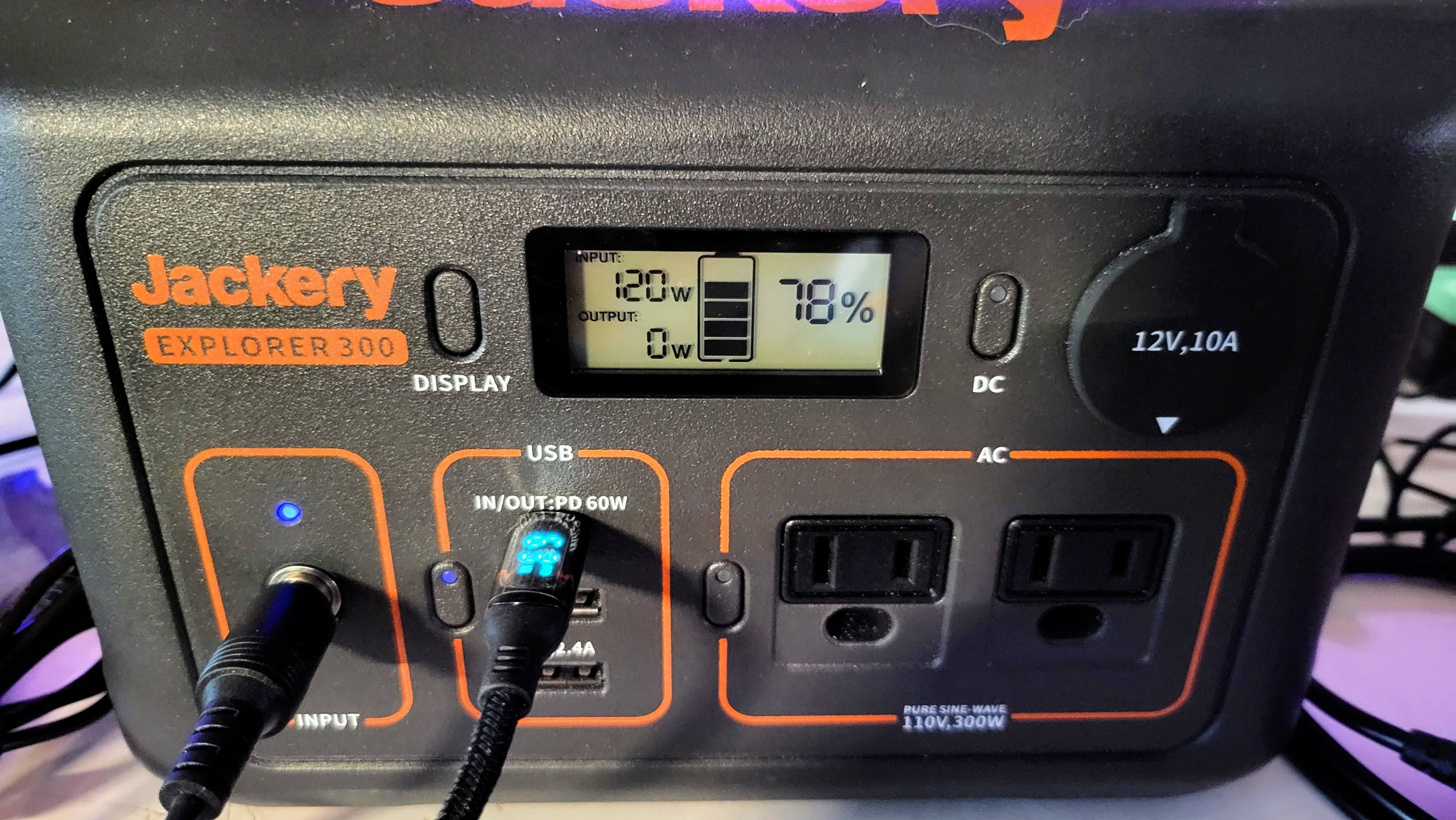
If you pair a good PD USB-C charger with the wall outlet charger for the Jackery, the Explorer 300 will recharge from 0-80% in about two hours! While some smartphones tout 0-80% charging speeds in a few minutes, the recharge speed of the power station is really fast, considering how large the battery is.
Jackery Explorer 300: What's not good
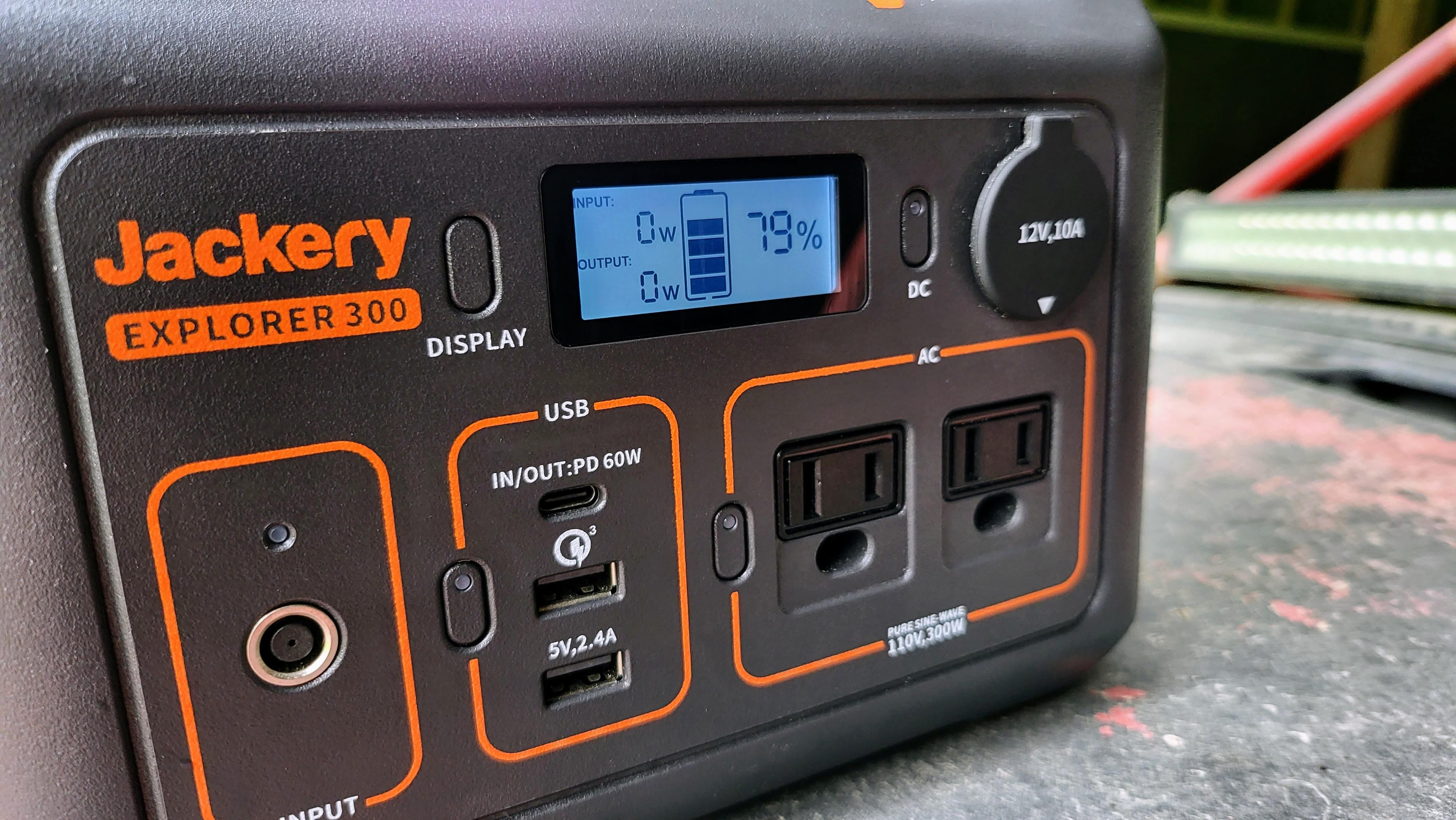
For all that I like about the Jackery Explorer 300, there are a few aspects I don't. For instance, I really wish the display offered more information. While I'm glad it shows the input and output rates and the remaining battery percentage, that really is the bare minimum. Other units offer an estimated time remaining until the battery is full or depleted. Though it isn't a major issue, it is a feature I wish were there.
I also wish the Explorer 300 had an external lamp. It's something I believe all power stations like this should have. While it wouldn't be quite as necessary on a large solar generator like the Delta Pro or the Bluetti AC200MAX, it is a helpful feature nonetheless. But I say it's less of a requirement on those hefty units because they aren't as portable as the Explorer 300 is. Being able to shed some light on an area with this small power station would be very appreciated.
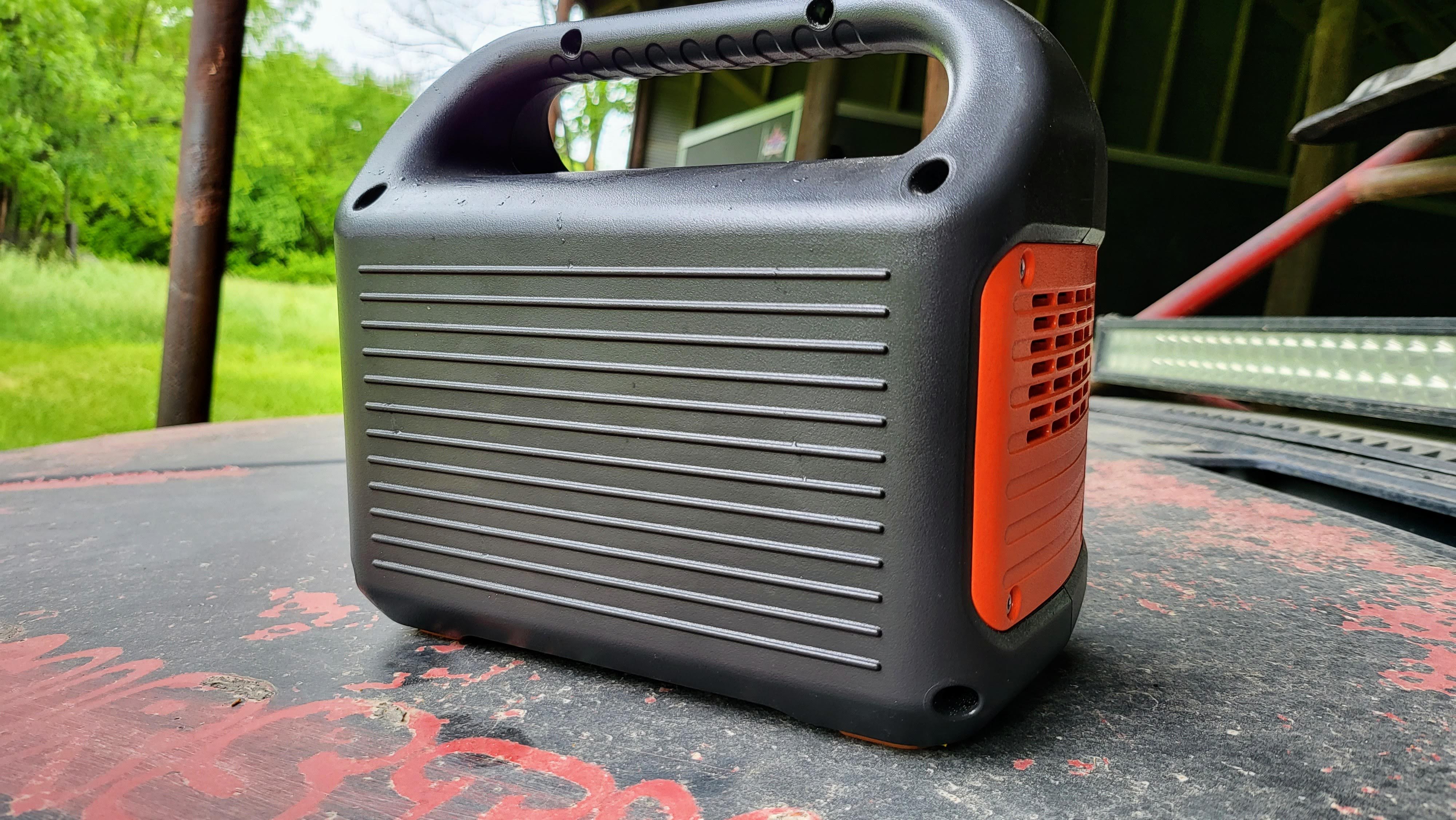
The other part of the Explorer 300 that I wish wasn't the case, though I understand why it is, would be the external inverter for the wall outlet. Where the actual power station is a very compact size, carrying around the cumbersome charging accessory is annoying. While larger packs have the luxury of building the charging inverters into the unit and only requiring a cord to charge it back up, doing so with the Explorer 300 would reduce its portability. Thankfully, the power station is rechargeable using a PD USB-C plug.
Jackery Explorer 300: Competition
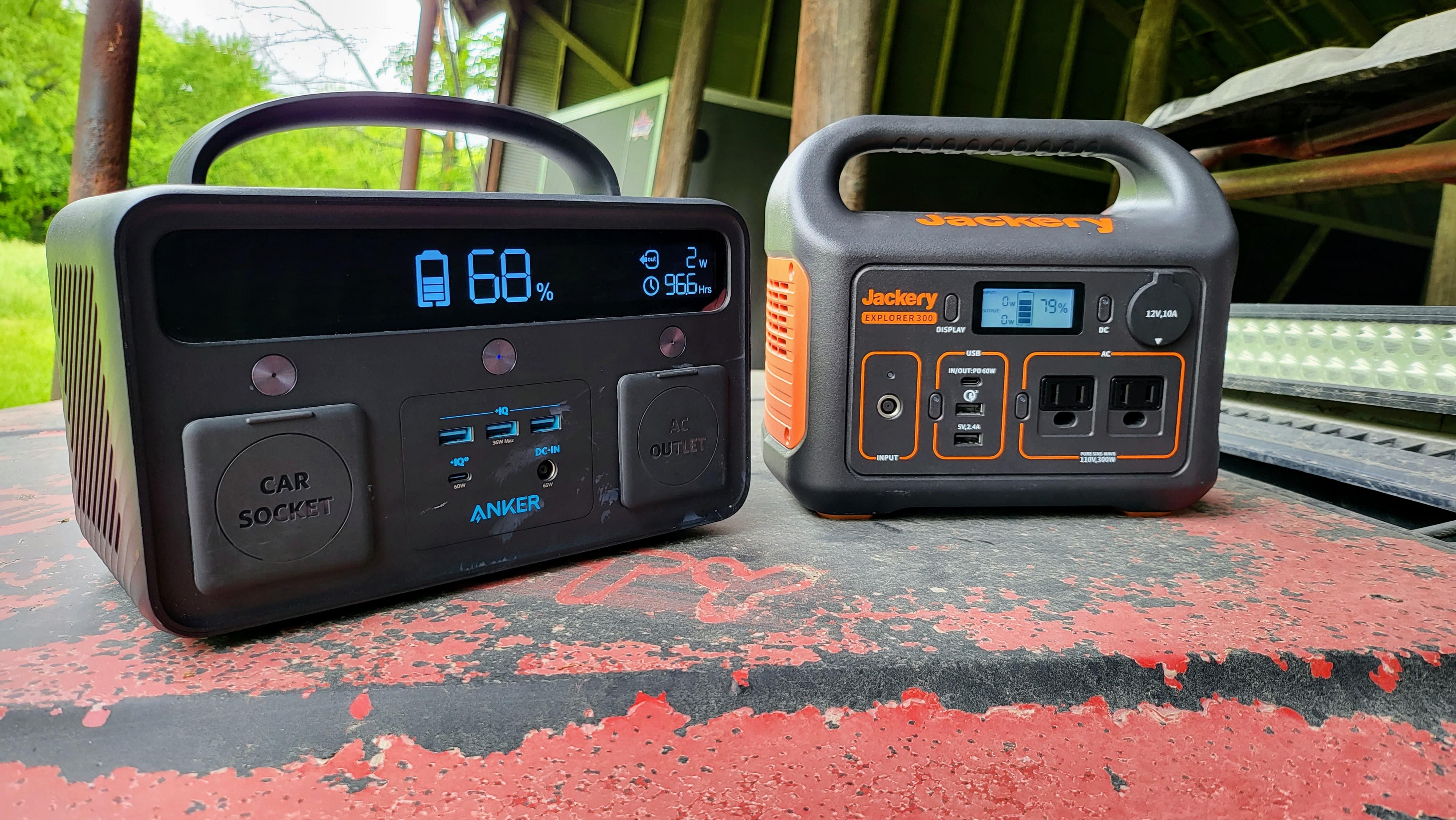
The small power station category is full of choices, but not all are created equal. When looking at reputable competitors to the Jackery Explorer 300, I settled on two that I want to highlight — and first is the Anker Powerhouse II 400. This power station offers very similar features in power output and port options. There are a couple of ways the Anker power station bests that of the Explorer 300.
There are three USB-A ports instead of two. The display is quite a bit larger and offers more information, including an estimated time remaining until full or empty. You'll also find two light options — an area light and a flashlight. However, there is only one AC port, and it is both three pounds heavier and more expensive.
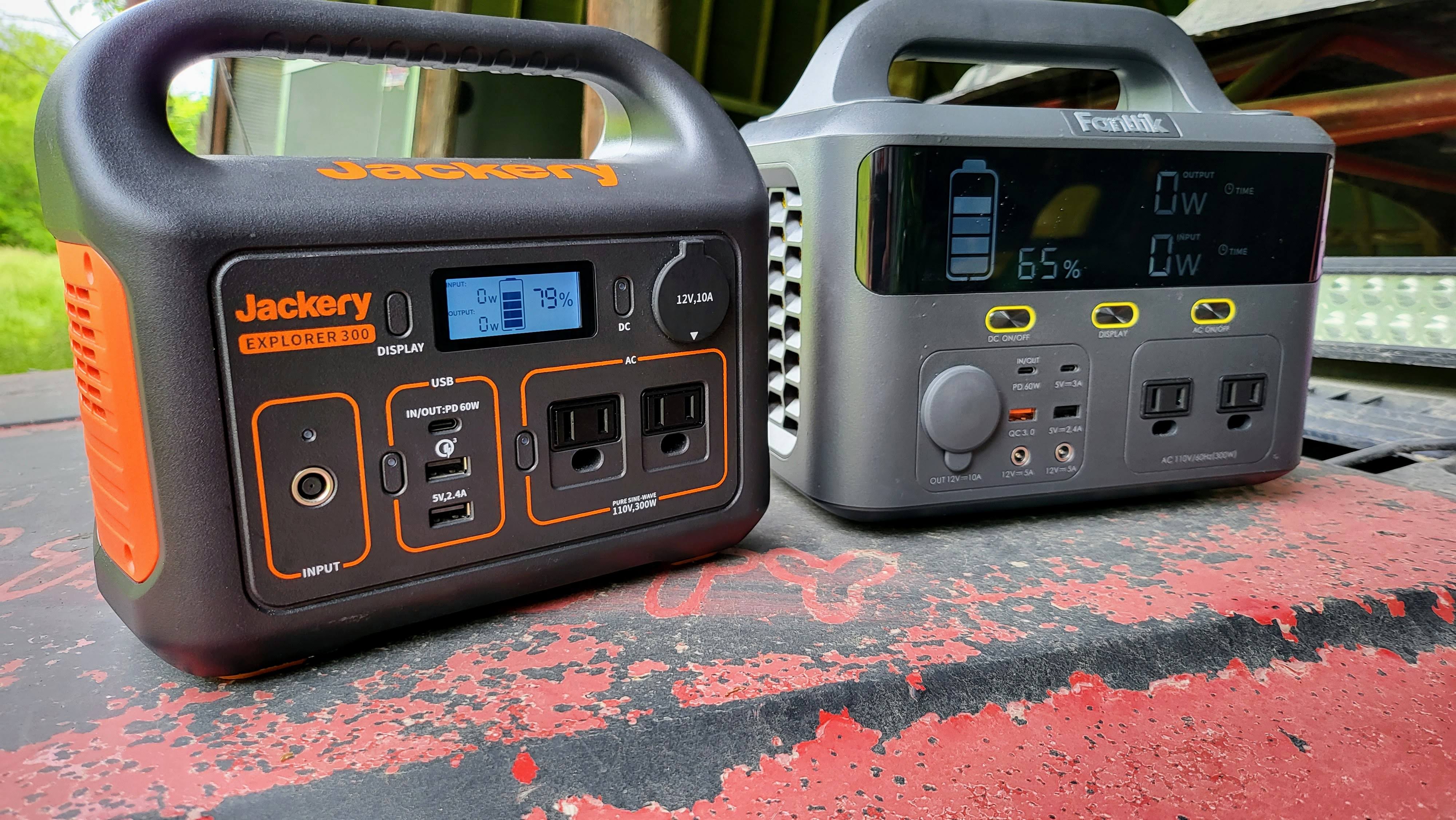
The other option to consider is the Fanttik EVO 300. I am still in the process of testing this unit, but, barring any unexpected issues, I have been quite pleased with it. On the EVO 300, you'll get two AC outlets, two USB-A, two USB-C ports, and the largest display of these three power stations. Fanttik also included a nice LED lamp on the back for those times you're stuck in the dark.
Priced similar to the Jackery, the Fanttik offers the same charging options as the Explorer 300 with a 0-100% rate of 2.5 hours. While the EVO 300 has the largest display of the bunch, it's also the largest. The overall size is bigger, but it doesn't entirely translate into weight. At 8.8 pounds, the Fanttik comes in second in its heft.
Jackery Explorer 300: Should you buy it?
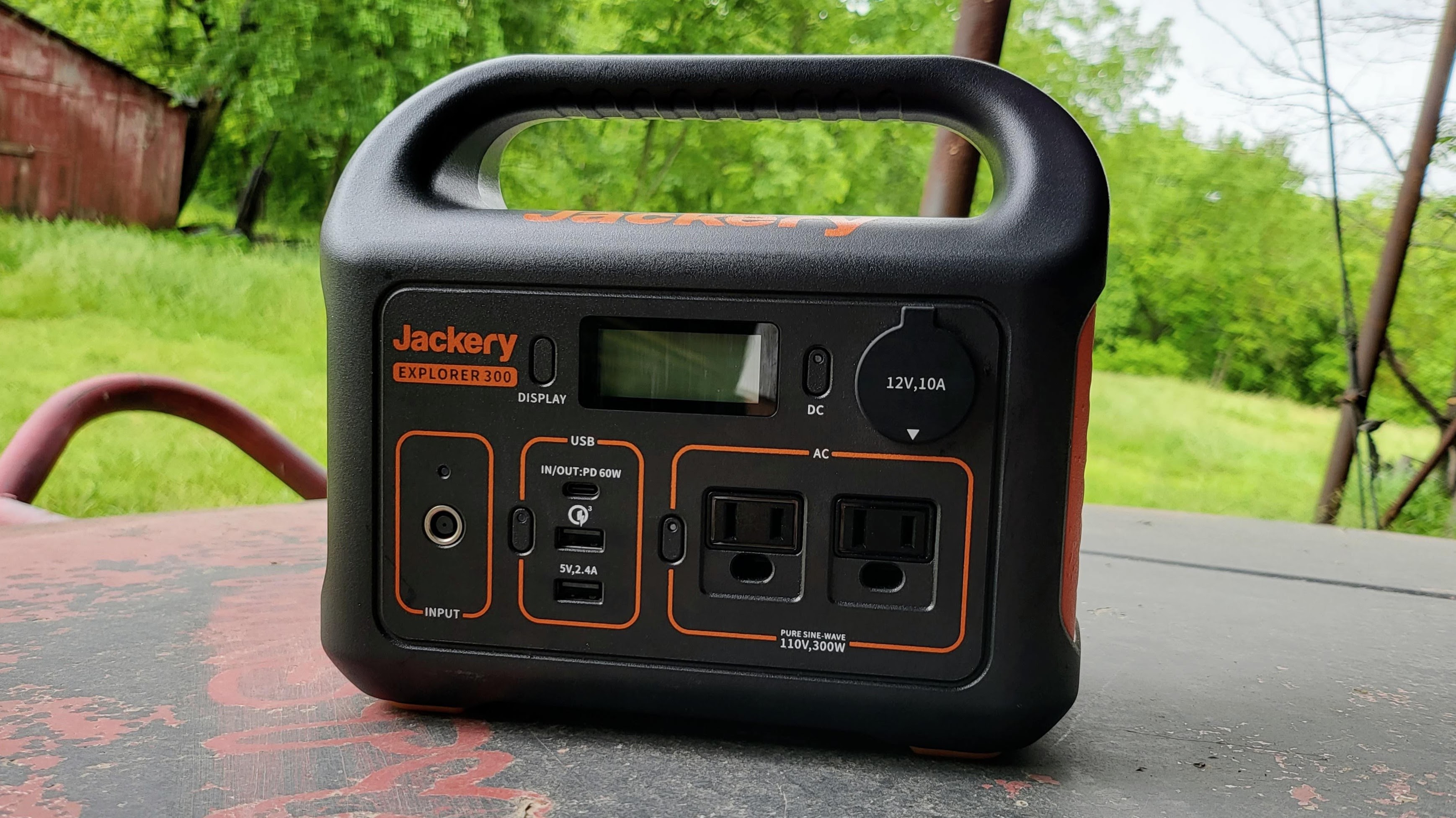
You should buy this if...
- You want a lightweight and compact power station.
- You want portable power for your small devices and electronics.
- You want a power station that can be recharged quickly.
You shouldn't buy this if...
- You want a display to know how long until the battery is drained or filled.
- You need more than 300W of power.
- You want a power station that has a built-in light.
The Jackery Explorer 300 is a perfect portable power companion with the proper expectations. Understanding that you won't be able to run a space heater or a full-sized refrigerator on it is key. But it's great that when the Explorer runs out of power, you'll be able to power it back up quickly, thanks to multiple charging options. Just be sure to keep a flashlight with you in times of need because the Explorer 300 won't be able to light the way.
Jackery Explorer 300: the wrap-up
Because of the compact size and flexible output options, the Jackery Explorer 300 is a standard part of my camping plans. I feel confident taking it with me because of how well it's built. There's no rattling or hollow feel to worry me that it can't hold up to a weekend away. Knowing that I'll be able to charge it from a wall outlet, USB-C, solar, or some combination to get it back up and going is great.
But as I said before, regardless of what you are trying to power, understanding what kind of draw that device will have is important. While 300W is a lot of power, it isn't going to be enough for items you may not realize can pull more juice than expected — like a hairdryer or blender. So long as you plan accordingly, the Jacker Explorer 300 is a great choice for the next time you are away or without power.
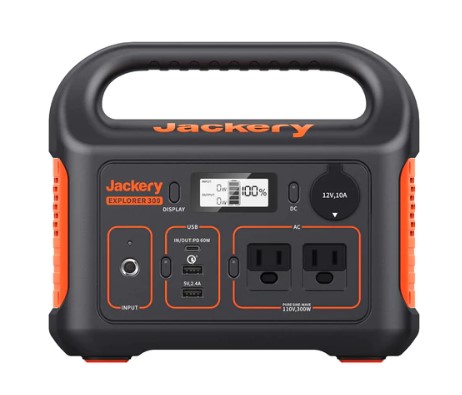
With up to 500W of surge output and a sustained max of pure sine wave 300W power, you'll have plenty of electricity to handle your smaller devices. It'll be ready when you are thanks to fast recharge times and the compact size to travel with you.

